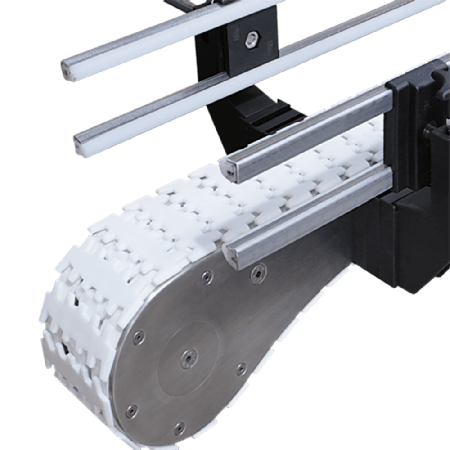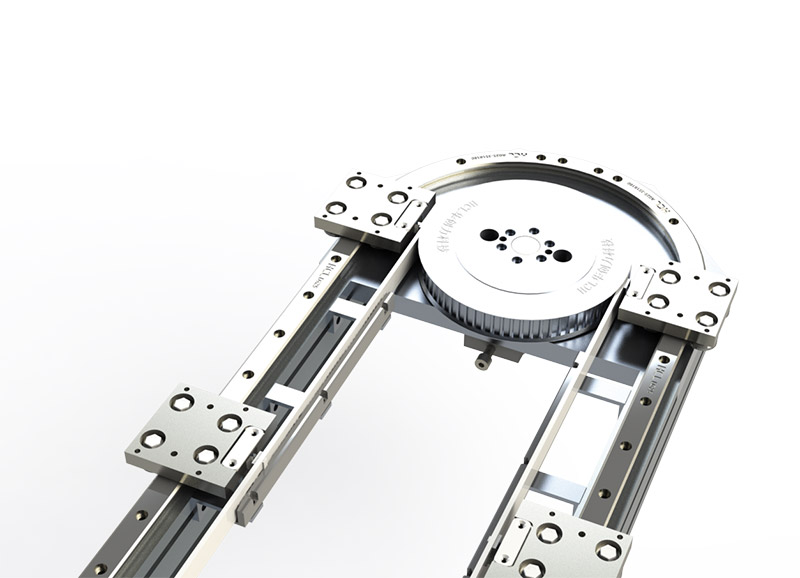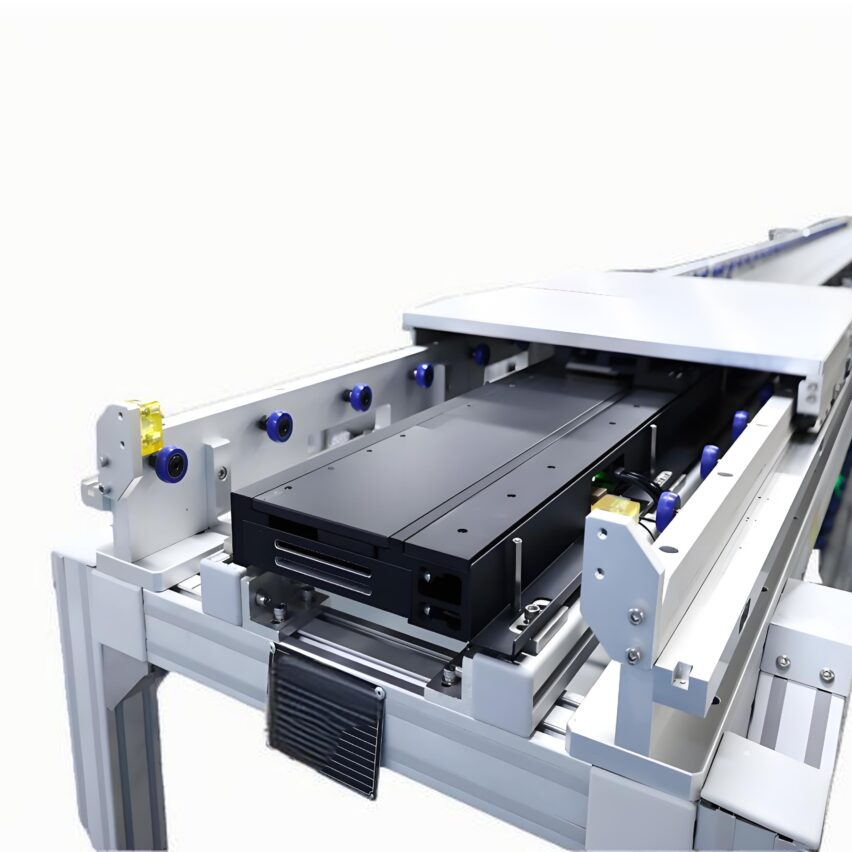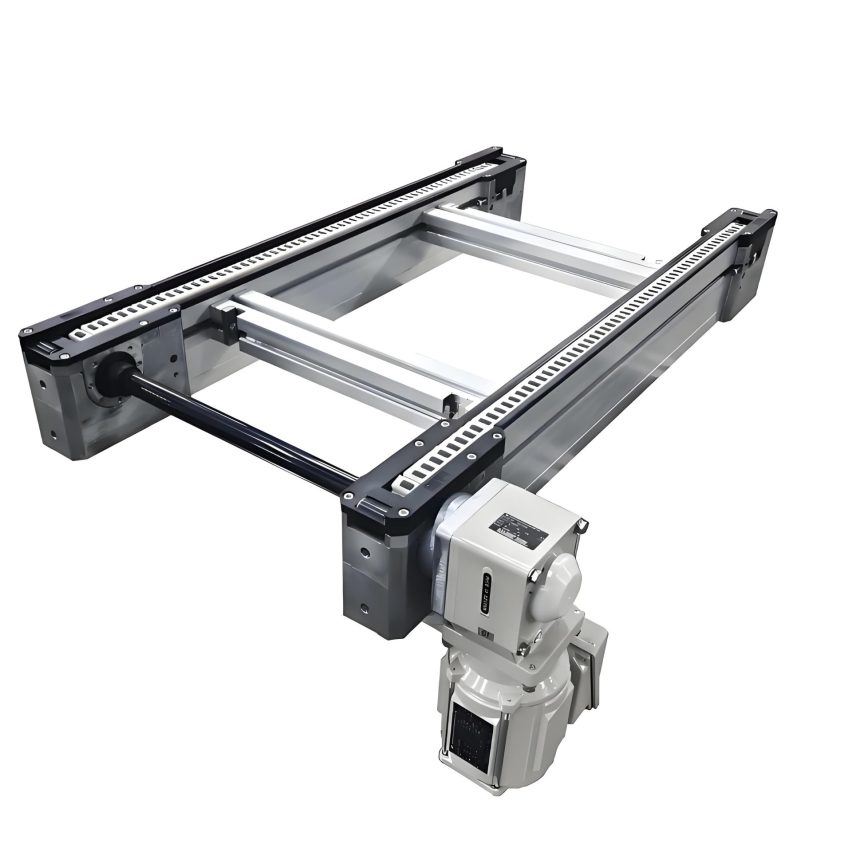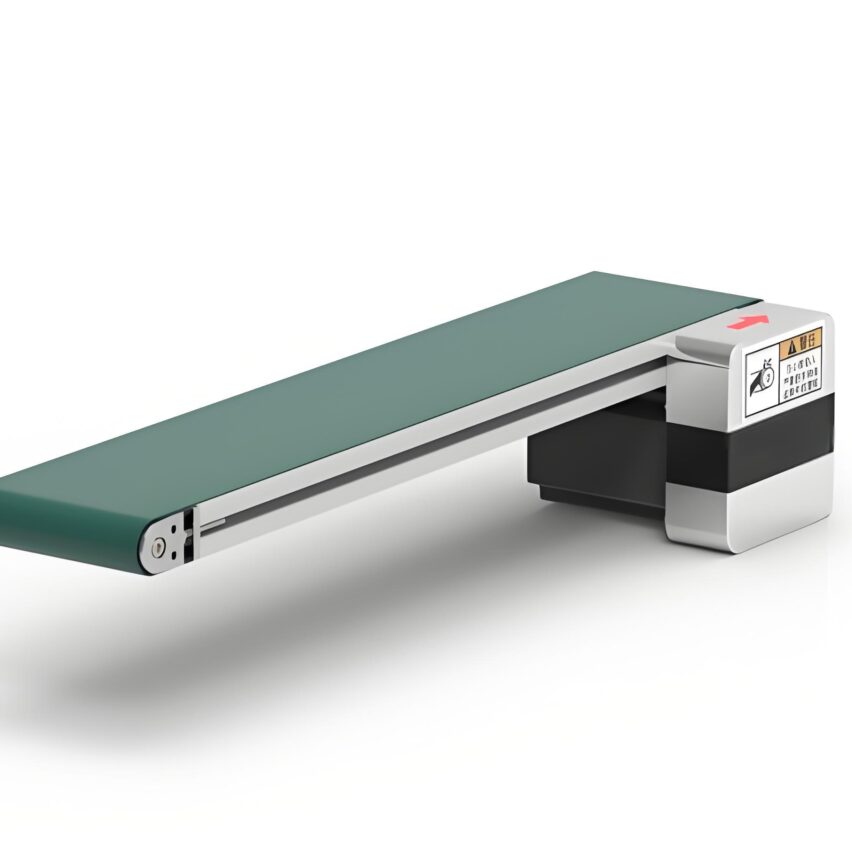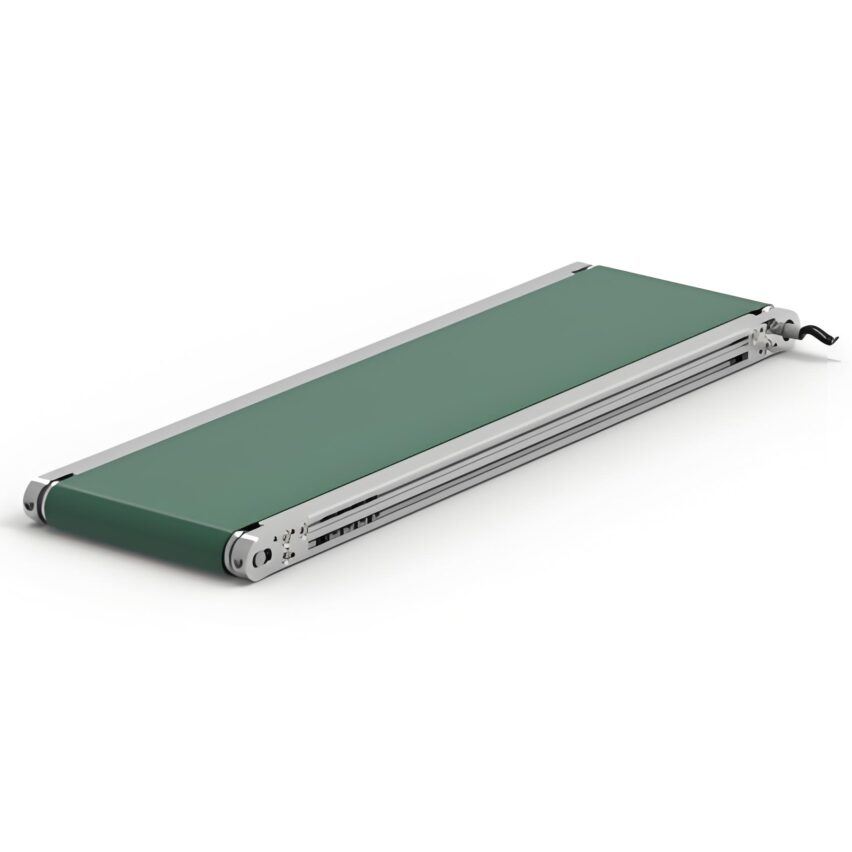I. Core technical principles: engineering realisation of differential speed effects
The central mystery of the triple speed chain isDesign of diameter difference between roller and roller (D/d=2)This is the "slow chain, fast plate" effect, which is achieved through the superposition effect of the motion. The physical principle can be expressed as follows:
Actual speed of the work plate V = V₁ × (1 + D/d)
When the roller diameter D is two times the roller diameter d, the theoretical speed can be up to three times the chain speed. However, three major contradictions need to be solved in actual engineering:
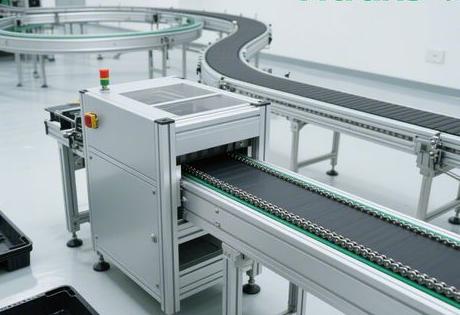
- friction loss: Conventional steel rollers have a coefficient of friction of 0.15, resulting in an actual growth rate of only 2.6-2.8 times;
- Runaway heat distortion: 50 metres of line body temperature difference ±5°C can trigger 1.2mm of expansion and contraction, leading to a risk of chain jamming;
- Heavy duty slipping: Slippage rate >8% under 400kg load, affecting conveying accuracy.
Intelligent Innovation Programme::
- Composite Roller Set: Silicon carbide ceramic layer (0.5mm thick) + micro-weave surface, wear resistance ↑400%, coefficient of friction reduced to 0.08;
- Segmented temperature control rails: Embedded temperature sensors every 5 metres to dynamically adjust the PTFE expansion coefficient;
- Magnetic Fluid Tension Control: Real-time compensation for tension fluctuation, heavy load slippage rate <0.5%.
Tesla Shanghai Factory Case::
- RFID chip automatically identifies car models, dynamically adjusts engine assembly beats, and improves Nissan's efficiency by 22%;
- Magnetic levitation stopper response time ≤ 10ms, positioning accuracy ± 0.05mm.
II. Engineering Applications: Efficiency Reconstruction for Multiple Scenarios
1. Automotive manufacturing: a balancing act between heavy loads and flexibility
- Double-layer speed chain architecture: Lower carbon steel frame load-bearing 2t/m, upper anti-static work board, space utilisation ↑60%;
- digital twin preview: Predicted hydraulic valve body assembly path conflicts, failure warning 48 hours in advance, and improved overall equipment efficiency (OEE) to 92%;
- Safe and redundant design: Emergency stop pull rope + grating protection, in line with GB/T 8196 mechanical safety standards.
2. Electronic precision assembly: a revolution in micron-level control
- Static dissipative technology: Chain surface resistance value is stable at 10⁶-10⁹Ω, preventing electrostatic breakdown of mobile phone motherboards;
- Class 10,000 clean fit: 304 stainless steel chain + laminar flow hood system, debris rate reduced to 0.05%;
- AI visual quality control: Real-time analysis of patch offset > 0.1mm, yield improved to 99.3%.
3. Pharmaceutical aseptic production: traceability and zero-contamination guarantees
- RFID full traceability: Workpiece board chip records pharmaceutical temperature and humidity parameters with a deviation rate of ↓90%;
- Autoclave compatible: Stainless steel chains are resistant to autoclaving at 135°C, with zero risk of microbiological contamination;
- Closed Conveyor: Maintains particle count <100/m³ in Class 100 clean areas.
III. Intelligent systems architecture: a data-driven transmission revolution
Three-level synergistic control model::
plaintextmake a copy ofSensing layer: ▪ Laser array (±0.03mm positioning) ▪ Infrared thermal camera (±0.5°C temperature monitoring) Decision layer: ▪ Digital twin previews load changes → Dynamic adjustment of inverter outputs ▪ Adaptive PID algorithm to compensate for tension fluctuations Execution layer: ▪ Servo jacking machine (synchronisation accuracy ± 0.1°) ▪ Maglev blocker (response ≤ 10ms)Modular Expansion Capabilities::
- hardware interface: The guide rail is reserved for T-slots, supporting quick-connect photoelectric switches (e.g. Omron) and pneumatic fixtures;
- communication protocols: Compatible with Profinet and EtherCAT to achieve synergy with AGVs and robotic arms;
- Load redundancy: Reduce upgrade cost 40% by selecting motor according to 800kg when current load is 500kg.
IV. Future trends: integration of lightweighting and quantum synergy
1. Superconducting magnetic levitation drives (mass production in 2026)
- Liquid nitrogen-cooled superconducting coils replace mechanical rollers, energy consumption drops by another 40%, theoretical growth rate ratio breaks through6 times.;
- Zero-contact drive eliminates metal dust and meets chip-level cleanliness requirements.
2. Quantum edge computing
- 100,000 nodes scheduling response delay <5ms (traditional PLC needs 200ms), thermal deformation compensation error ≤ 0.01mm;
- The blockchain generates a "carbon passport" with a recycling rate of 95% for aluminium profiles and a reduction of 28% in the whole life cycle carbon footprint.
3. Piezoelectric smart materials
- MIT developed piezoelectric rollers: real-time sensing of load deformation (sensitivity 0.1μm), self-adjusting friction coefficient (0.05~0.25).
Self-questioning: core concerns of the triple-speed chain
Q1: Is the tripling rate a real growth rate or a theoretical one?
A.Measured growth rate range of 2.8-3.2 timesThe design of the product is influenced by the load and the operating conditions:
- Light load (≤200kg): 3.0-3.2 times measured (friction loss 5%)
- Heavy load (≥800kg): 2.8-3.0 times with hydraulic compensation enabled
Q2: Why don't you increase the roller diameter infinitely?
A.Subject to geometric constraints and dynamics::
- Maximum roller diameter ≤ chain pitch × 0.85 (anti-interference)
- Centrifugal force offset >0.1mm when D/d >2.5, affecting positioning accuracy
Q3: Is the maintenance cost higher than traditional conveyor lines?
A.Full Life Cycle Costs Reverse 28%::
- Self-healing lubrication system extends maintenance intervals to 3 years
- AI Predictive Maintenance Reduces 70% Sudden Failure Downtime
While the global manufacturing industry is chasing "unmanned", the triple-speed chain is taking over withAccuracy of ±0.05mm under 1.2 tonnes of heavy loads, andQuantum scheduling response <5msThe hardcore data proves it.The boundaries of industrial efficiency are being rewritten by the symbiosis of precision drives and data intelligence.
Exclusive data: According to industry forecasts for 2025, factories adopting intelligent triple-speed chains will see their order delivery cycle time shortened by an average of 40% and output value per square metre increased by 3.2 times, with the global market size set to exceed $12 billion by 2027.





